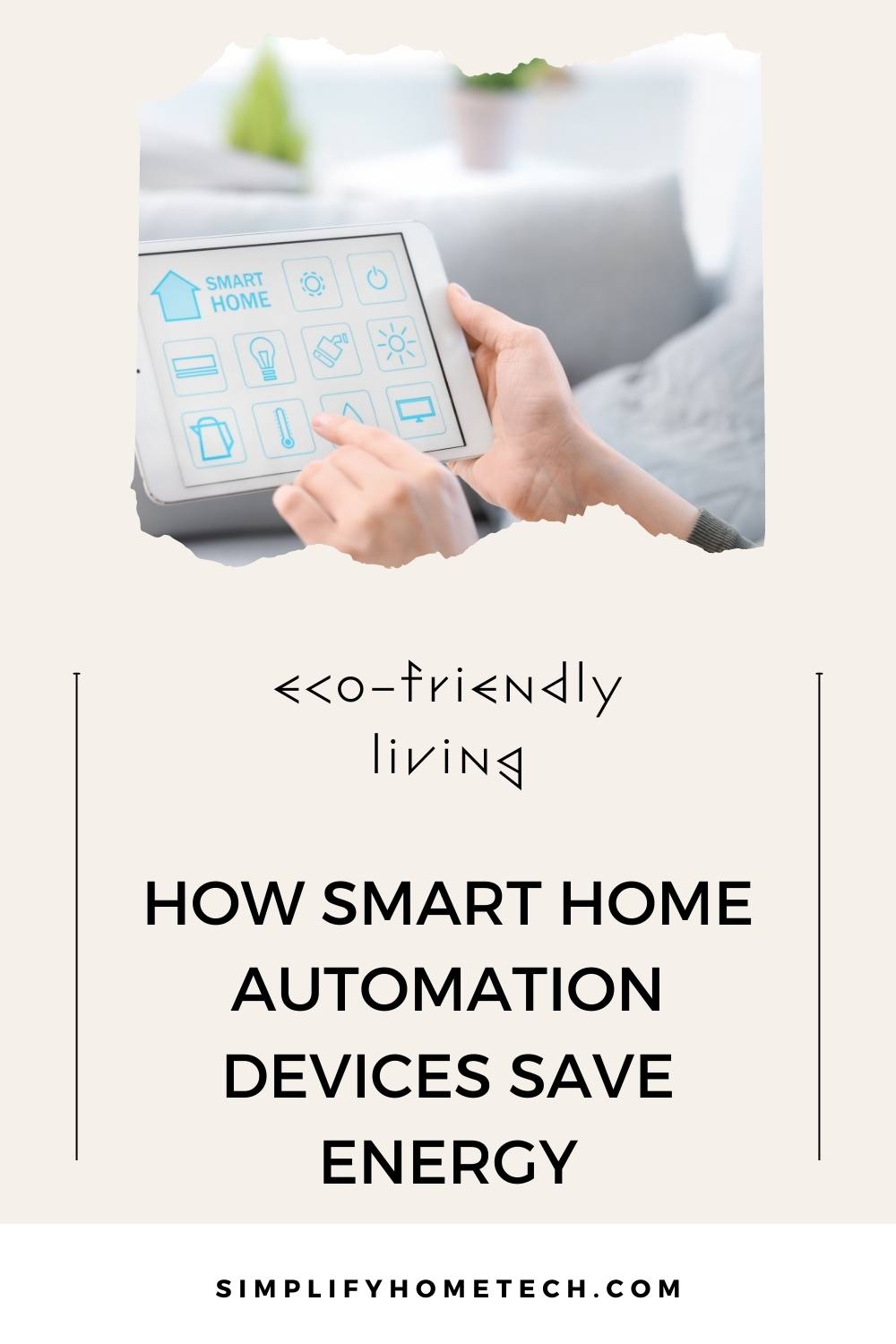In an age of increasing energy costs and growing environmental awareness, homeowners are seeking smarter ways to reduce energy consumption without sacrificing comfort. One of the most effective solutions? Smart home automation. Once considered a luxury, smart devices are now becoming essential tools for creating energy-efficient homes that are both cost-effective and environmentally friendly.
This in-depth guide explores how smart home automation helps save energy, the most impactful devices to consider, common implementation challenges, and practical tips to maximize benefits—empowering you to make smarter choices for your home and the planet.
What Is Smart Home Automation?
Smart home automation involves using internet-connected devices to monitor, manage, and control home systems such as lighting, climate, appliances, and more. These devices can be automated based on schedules, sensor input, or your location, or controlled manually through mobile apps and voice assistants.
Rather than relying on traditional systems that operate at fixed intervals or full capacity regardless of actual needs, smart automation uses real-time data and intelligent algorithms to optimize performance. This tailored operation reduces energy waste, improves efficiency, and delivers better user comfort.
Why Energy Efficiency Matters
Before diving into specific devices, it’s worth understanding why energy efficiency is crucial:
- Lower utility bills: Reducing unnecessary consumption leads to immediate cost savings.
- Environmental protection: Energy production—especially from fossil fuels—is a major contributor to greenhouse gas emissions. Efficient use helps reduce your carbon footprint.
- Resource conservation: Smarter energy use means less strain on the power grid and more sustainable resource management.
- Home value and comfort: Energy-efficient homes are more appealing to buyers and provide improved comfort and functionality.
Smart home devices help achieve all of the above by making your home more responsive, data-driven, and customizable.
Core Smart Devices That Save Energy
Here’s a closer look at the key devices that contribute most to energy savings and how they work:
1. Smart Thermostats
Heating and cooling typically make up the largest share of residential energy use. Traditional thermostats often waste energy by running systems when they’re not needed. In contrast, smart thermostats optimize usage based on your behavior, preferences, and even weather forecasts.
Key Features:
- Learning algorithms: The device learns your schedule and adjusts temperatures automatically.
- Remote control: Adjust settings from anywhere using a smartphone.
- Geofencing: Uses your location to know when you’re home or away and adjusts accordingly.
- Adaptive scheduling: Automatically reduces heating/cooling during the night or when no one is home.
Real-World Benefit:
Homes using smart thermostats can reduce their heating and cooling bills by 10–20%, depending on the region and usage patterns.
2. Smart Lighting
Lights are frequently left on in empty rooms, contributing to unnecessary energy waste. Smart lighting systems reduce this by providing more control and automation.
Key Features:
- Motion sensors: Lights turn on only when movement is detected and shut off when rooms are unoccupied.
- Scheduling: Lights operate according to a preset timetable that matches your daily routine.
- Dimming: Automatically adjusts brightness levels to suit natural light availability or user preference.
- Remote access: Switch lights on or off using a mobile app, even when you’re not home.
Real-World Benefit:
Smart lighting can cut electricity use by up to 50% compared to traditional incandescent systems—especially when paired with LED technology.
3. Smart Power Strips and Outlets
Many devices use power even when turned off, known as phantom or standby load. Smart plugs and power strips prevent this hidden drain by cutting off electricity to devices not in use.
Key Features:
- On/off scheduling: Automatically turns off power during times when devices aren’t needed (e.g., overnight).
- Remote control: Easily shut down energy-draining appliances from your phone.
- Usage monitoring: Shows how much power each device uses, helping you spot energy hogs.
Real-World Benefit:
Smart plugs can eliminate up to 75% of phantom energy usage from entertainment centers, computer setups, and kitchen appliances.
4. Smart Appliances
From refrigerators and washing machines to ovens and dishwashers, many household appliances are now equipped with intelligent features that enhance energy efficiency.
Key Features:
- Load sensing: Washers and dishwashers adjust water and energy usage based on the amount of laundry or dishes.
- Delayed start: Schedule appliances to run during off-peak energy hours.
- Self-diagnosis: Alert users to maintenance needs before inefficiencies occur.
Real-World Benefit:
Using smart appliances can result in 10–25% lower energy use depending on the appliance type and household usage habits.
5. Smart Blinds and Curtains
Temperature regulation is crucial for energy efficiency. Smart window coverings can reduce heat gain during summer and heat loss during winter by adjusting based on sunlight and room temperature.
Key Features:
- Time-based automation: Automatically open or close at certain times to complement natural light and HVAC usage.
- Sunlight detection: Sensors track sunlight intensity and temperature, adjusting blinds accordingly.
- Integration: Works with smart thermostats for coordinated temperature control.
Real-World Benefit:
Smart blinds can reduce heating and cooling energy needs by as much as 30% in certain climates, especially in homes with large windows.
6. Whole-Home Energy Monitors
Understanding where and how energy is being used is key to making smart changes. Energy monitors connect to your home’s electrical panel and offer detailed insights.
Key Features:
- Real-time tracking: See immediate consumption data and identify energy-intensive devices.
- Alerts: Receive notifications when unusual usage patterns are detected.
- Historical data: Understand long-term trends and identify habits to change.
Real-World Benefit:
Energy monitors help homeowners save an average of 5–15% simply by making them more aware of their usage habits.
How Smart Devices Work Together
One of the greatest strengths of smart home automation lies in integration. When multiple devices communicate, they create synergistic savings that exceed individual capabilities.
Example Scenario:
- You leave for work. The smart thermostat turns off heating, smart lights shut off, blinds close to block sunlight, and smart plugs disconnect unused devices.
- When you return, lights gradually brighten, blinds open, and the thermostat begins to heat or cool your home just before you walk in.
This coordinated operation minimizes waste and enhances comfort—without you lifting a finger.
Overcoming Common Challenges
While smart home technology offers numerous benefits, homeowners may face a few initial hurdles. Fortunately, most are easily overcome with planning and education.
1. Upfront Costs
Smart devices often have higher purchase prices than conventional alternatives.
Solution: Start with high-impact, affordable devices like smart plugs or a thermostat. Gradually expand your system as budget allows. Also, check for utility company rebates or tax incentives.
2. Compatibility Issues
Not all devices work seamlessly together.
Solution: Choose devices that are certified with major ecosystems like Google Home, Apple HomeKit, or Amazon Alexa. Prioritize interoperability when building your system.
3. Data Privacy Concerns
Smart devices collect usage data, which may raise privacy issues.
Solution: Use strong, unique passwords, enable two-factor authentication, and keep devices updated with the latest firmware. Choose reputable brands with strong privacy policies.
4. Technical Learning Curve
Some users may find installation and operation complex.
Solution: Many devices now offer simple, app-based setups. Instructional videos and community forums are also widely available. Consider hiring a professional if needed.
Real-Life Impact: Case Examples
A Family Home in the Midwest
After installing a smart thermostat, LED smart bulbs, and several smart plugs, this household reduced their energy bill by over $500 in the first year. Heating efficiency improved by 18%, and lighting costs dropped by nearly half.
Urban Apartment Efficiency Upgrade
In a one-bedroom city apartment, the tenant installed smart lights, power strips, and a basic energy monitor. With targeted changes like unplugging energy hogs and dimming lights automatically at night, monthly electricity costs dropped by 20%.
Senior Living Made Smarter
A retired couple integrated motion sensors with their lighting and heating systems. Without needing to adjust anything manually, their home stays comfortable while reducing electricity use by 25%—and without the risk of forgetting to turn things off.
Practical Tips for Maximum Energy Savings
- Start with a plan: Identify which areas of your home use the most energy and target them first.
- Bundle automations: Create routines that control multiple devices at once, like a “Good Night” or “Away” mode.
- Regularly review energy data: Use app insights or monitor reports to fine-tune usage patterns.
- Educate household members: Everyone in the home should understand how systems work to prevent waste.
- Use occupancy sensors: Especially in bathrooms, hallways, and closets where lights are often forgotten.
- Consider time-of-use rates: If your utility charges more during peak hours, schedule high-energy tasks like laundry during off-peak times.
The Future of Smart Home Energy Management
Looking ahead, smart homes will play an even more significant role in energy conservation:
- AI-Powered Automation: Future systems will predict your habits more accurately and make adjustments without needing input.
- Renewable Integration: Homes will automatically manage solar panels and batteries for maximum efficiency.
- Grid-Smart Homes: Devices will respond to signals from utility companies to reduce strain during peak demand times—possibly even earning you money.
As adoption grows, prices will drop, systems will become more intuitive, and smart energy management will become the standard rather than the exception.
Final Thoughts
Smart home automation is more than just a trend—it’s a transformative approach to modern living that balances comfort, convenience, and responsibility. By leveraging intelligent technologies, homeowners can make a substantial impact on their energy use, financial savings, and environmental footprint.
Whether you’re just beginning your journey or expanding an existing setup, every smart device installed is a step toward a greener, more sustainable future. The key is starting with purpose, integrating thoughtfully, and learning as you go.
Smarter homes lead to smarter living—and a healthier planet.
You might also like,

